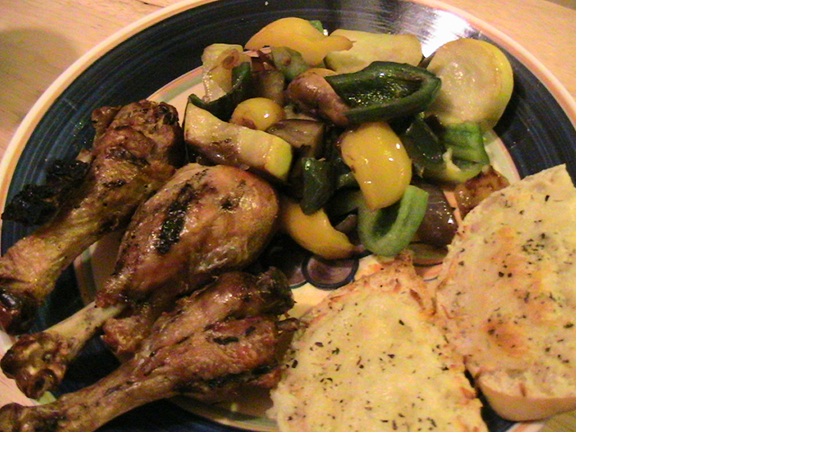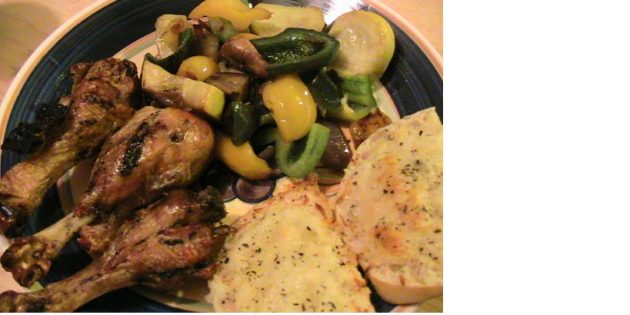
Chicken is one of the most versatile proteins that can be used in chicken, especially if you’re on a budget.
Unfortunately, raw chicken can also carry tons of nasty bacteria that can get you really sick or even kill you or your friends and family if you don’t handle it properly.
Here are a few tips to help you cook delicious and SAFE chicken dishes!
1. COOKING TIP: To ensure even cooking, start with chicken breasts, salmon fillets, or pork cutlets that are uniform in thickness and size. Use a kitchen scale to make sure your pieces are the same size. Most recipes call for 4 – 6 oz. pieces.
2. COOKING TIP: To achieve even thickness, butterfly thick chicken breasts by cutting across them horizontally with a sharp knife. Do not cut all the way through. Instead, open the two halves so they lie flat. Then place between 2 sheets of plastic wrap and pound flat with a meat mallet or rolling pin until the entire piece is the same thickness.
3. COOKING TIP: Never thaw frozen chicken at room temperature as this will allow harmful bacteria to grow. Instead, place frozen chicken in a glass dish and defrost in the refrigerator.
4. COOKING TIP: Allow 24 hours for a 3-4 lbs. whole chicken to thaw in the refrigerator; 12 hours for frozen parts.
5. COOKING TIP: Don’t use the same permeable wood cutting board you use for your vegetables and other food items to prepare chicken. Choose a glass or other impermeable surface instead to protect against bacteria.
6. COOKING TIP: The acids in marinades help break down the protein fibers in chicken meat. Marinating your chicken prior to cooking will tenderize the meat and add lots of great flavor to your recipes. Wine, vinegar, and fruit juices are all excellent ingredients to use in marinades.
7. COOKING TIP: After your chicken has marinated, be sure to discard all remaining liquid rather than continuing to cook with it.
8. COOKING TIP: Always cook chicken to temperature, not by time. Internal starting temperatures can vary widely, which can affect the total cooking time quite a bit. Use an instant-read thermometer inserted into the thickest part of the meat to make sure your dish has reached at least 165 degrees F.
9. COOKING TIP: 165 degrees F is the minimum recommended safe internal temperature for chicken. However, some cuts are better at slightly higher temperatures. Here are some general guidelines:
165 degrees – boneless chicken breasts
170 degrees – bone-in chicken breasts
175 thighs & drumsticks
10. COOKING TIP: Cook fresh or previously frozen chicken within 2 days of purchasing it. Visit https://mountainmangourmet.com for more great cooking tips, recipes, video cooking lessons, and more!
11. COOKING TIP: Don’t refreeze previously frozen chicken meat. Double check before buying meat at your grocery store to determine if it has been frozen and defrosted.
12. COOKING TIP: Refrigerate chicken within 2 hours of cooking it.
13. COOKING TIP: Many recipes require searing the chicken over high heat prior to cooking to brown it. Don’t let those beautiful, delicious brown bits on the bottom of the pan go to waste! Deglaze the pan with some wine or chicken stock when you are done searing. This is the key to rich and delicious pan sauces and gravies.
14. COOKING TIP: Those tasty brown bits left on the bottom of the pan after roasting or pan frying chicken or other meats are called “fond.” Fond is your friend!
15. COOKING TIP: Before roasting a whole chicken, be sure to rinse the inside cavity before seasoning and stuffing. Then, pat the outside dry with paper towels to help the skin brown nicely. Water left on the skin will turn to steam inside the oven, which will inhibit browning.
16. COOKING TIP: It is not necessary to rinse chicken prior to cooking it. In fact, rinsing is discouraged because this can cause germs to splatter around your food prep area. However, you should still rinse out the cavities of whole birds before seasoning and stuffing them.
17. COOKING TIP: Use parchment paper when oven roasting chicken breasts to prevent them from drying out. A sheet of parchment paper placed under the meat will protect it and help keep it moist.
18. COOKING TIP: Allow chicken to rest at room temperature for 20 to 30 minutes prior to roasting. This will help the meat roast evenly throughout.
19. COOKING TIP: Starchy side dishes like pasta, rice and potatoes are ideal for chicken recipes with pan sauces because they help soak up all that delicious flavor. For a great low carb alternative, try garlic mashed cauliflower instead.
20. COOKING TIP: Chicken, like most meats, needs to “rest” when it comes out of the oven to allow the juices to be re-absorbed. To rest, place your meat on a serving plate and tent a large piece of aluminum foil over it. If you want tender and juicy chicken, don’t skip this step!
21. COOKING TIP: The amount of time chicken needs to rest after cooking will depend on size. Smaller pieces will require less time (5-10 minutes) than a whole bird, which may take 20-30 minutes.




